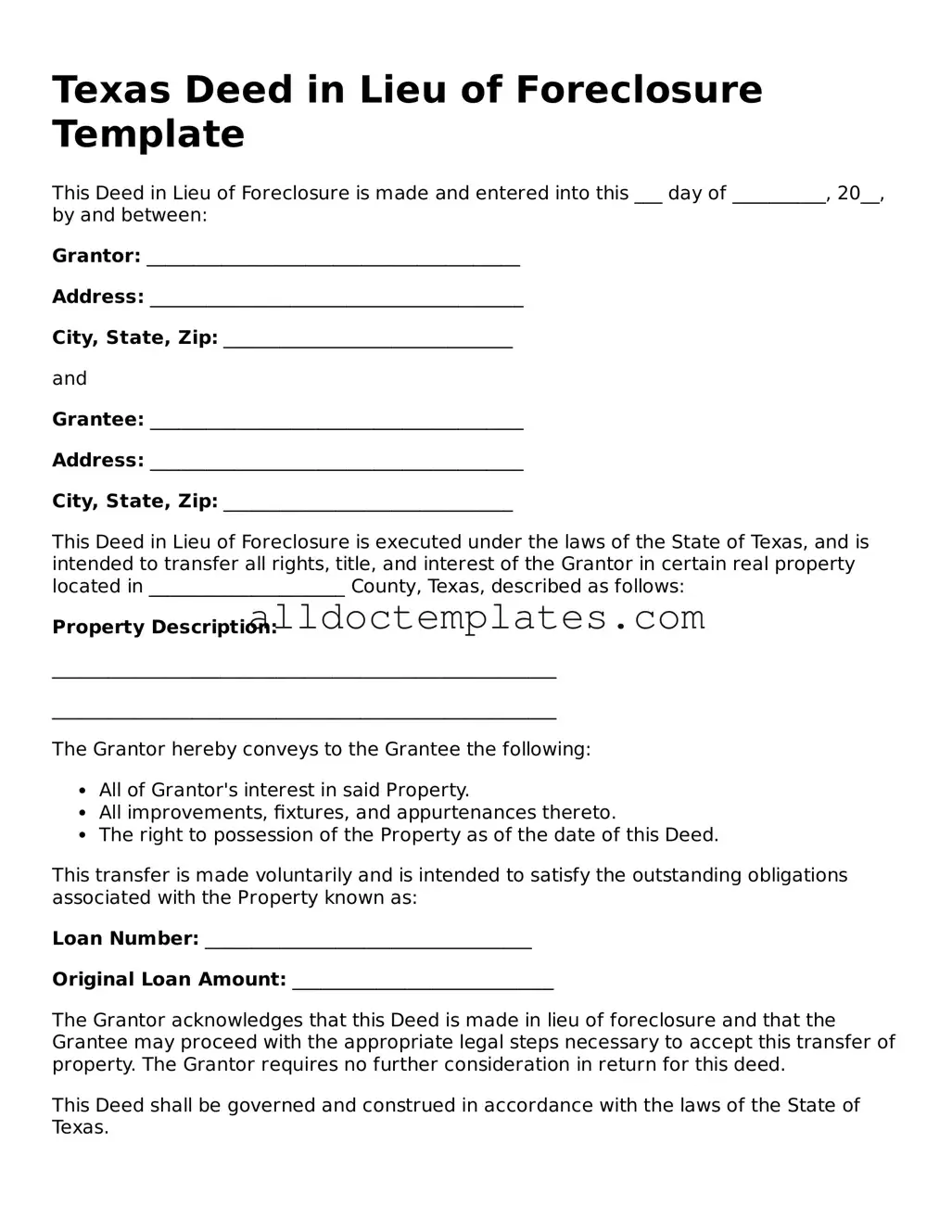Texas Deed in Lieu of Foreclosure Template
This Deed in Lieu of Foreclosure is made and entered into this ___ day of __________, 20__, by and between:
Grantor: ________________________________________
Address: ________________________________________
City, State, Zip: _______________________________
and
Grantee: ________________________________________
Address: ________________________________________
City, State, Zip: _______________________________
This Deed in Lieu of Foreclosure is executed under the laws of the State of Texas, and is intended to transfer all rights, title, and interest of the Grantor in certain real property located in _____________________ County, Texas, described as follows:
Property Description:
______________________________________________________
______________________________________________________
The Grantor hereby conveys to the Grantee the following:
- All of Grantor's interest in said Property.
- All improvements, fixtures, and appurtenances thereto.
- The right to possession of the Property as of the date of this Deed.
This transfer is made voluntarily and is intended to satisfy the outstanding obligations associated with the Property known as:
Loan Number: ___________________________________
Original Loan Amount: ____________________________
The Grantor acknowledges that this Deed is made in lieu of foreclosure and that the Grantee may proceed with the appropriate legal steps necessary to accept this transfer of property. The Grantor requires no further consideration in return for this deed.
This Deed shall be governed and construed in accordance with the laws of the State of Texas.
IN WITNESS WHEREOF, the undersigned have executed this Deed in Lieu of Foreclosure as of the day and year first above written.
Grantor's Signature: ____________________________
Date: _________________________________________
Grantee's Signature: ____________________________
Date: _________________________________________
Notary Public: __________________________________
My Commission Expires: ________________________
